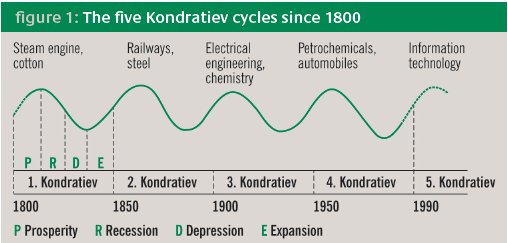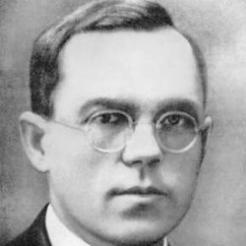Is the IT boom running out of steam? What will the next big breakthrough be? John Tate asks the questions.
For the last two or three years the media has been flooded with discussions on what is causing the current recession.
This is far from a new topic as there have been many recessions over the centuries and repeated boom-to-bust cycles. I’d like to remind you of a theory about these cycles developed around 90 years ago; it’s called the ‘Kondratiev wave’.
Mr Kondratiev (pictured) put forward an argument in the 1920s that there is an economic cycle in the industrial world, ranging from 40 to 60 years, that is repeated. This cycle consists of alternating periods of high growth, followed by recession.
From my perspective, the interesting part of his theory is that each wave is driven by a new area of technology. Every new development leads to an initial period of growth, and then boom, which is followed by recession and ultimately depression as the benefits of the technology reach saturation point. This ‘wave’ repeats itself as the next new technology starts a fresh cycle.
Since the start of the industrial revolution five technologies have been singled out by economists as the ‘cycle drivers’. It all started with the steam engine. This was followed by the advent of railways and steel; electricity; petrochemicals and widespread car ownership; and finally information technology. Figure 1 illustrates these five cycles.
If we apply this theory to the latest wave – information technology – it can be argued that this kicked off in the mid-1960s or 1970s. The mid-sixties saw the advent of ‘off-the-shelf’ mini and mainframe computers such as the IBM S/360 or the DEC PDP-8. The 1970s saw the introduction and early adoption of the PC.
Since then hardware and software prices have fallen and systems have become more reliable. The communication infrastructure has been put in place to allow increased access to the internet which has spawned the advent of ‘cloud’ computing. This growth of the IT industry has changed pretty well every aspect of business life.

The IT cycle
If we accept Kondratiev’s theory, the key question is where are we in the IT cycle?
If we consider the start date as the mid-60s, it should by now have passed the peak of prosperity and have reached the saturation point that leads to a recession, and then depression.
Are we seeing a slowdown in innovation with IT, and have we reaped the bulk of the benefit from computer technology? The argument to support this decline could include the fact that PC and mobile-device adoption is now widespread in the developed world, and much so-called ‘new innovation’ is more about advertising and sales than it is about fundamental technological breakthroughs.
The argument against this is that, despite all the investment in IT, we have still to reap the lion’s share of the benefits which will hopefully arise from improved business efficiency and the availability of better information.
Whether or not you believe Kondratiev’s theory, it is certainly worth thinking hard about any future return on investment from IT. All too often IT investment fails to deliver the expected benefits.
And, of course, if Kondratiev is to be believed we should be starting a new wave, with a new technology, just about now.
What exact form do you think this will this take? Answers on a postcard, please.
John Tate is a business consultant, IT adviser to CFG and a visiting lecturer at Cass Business School









